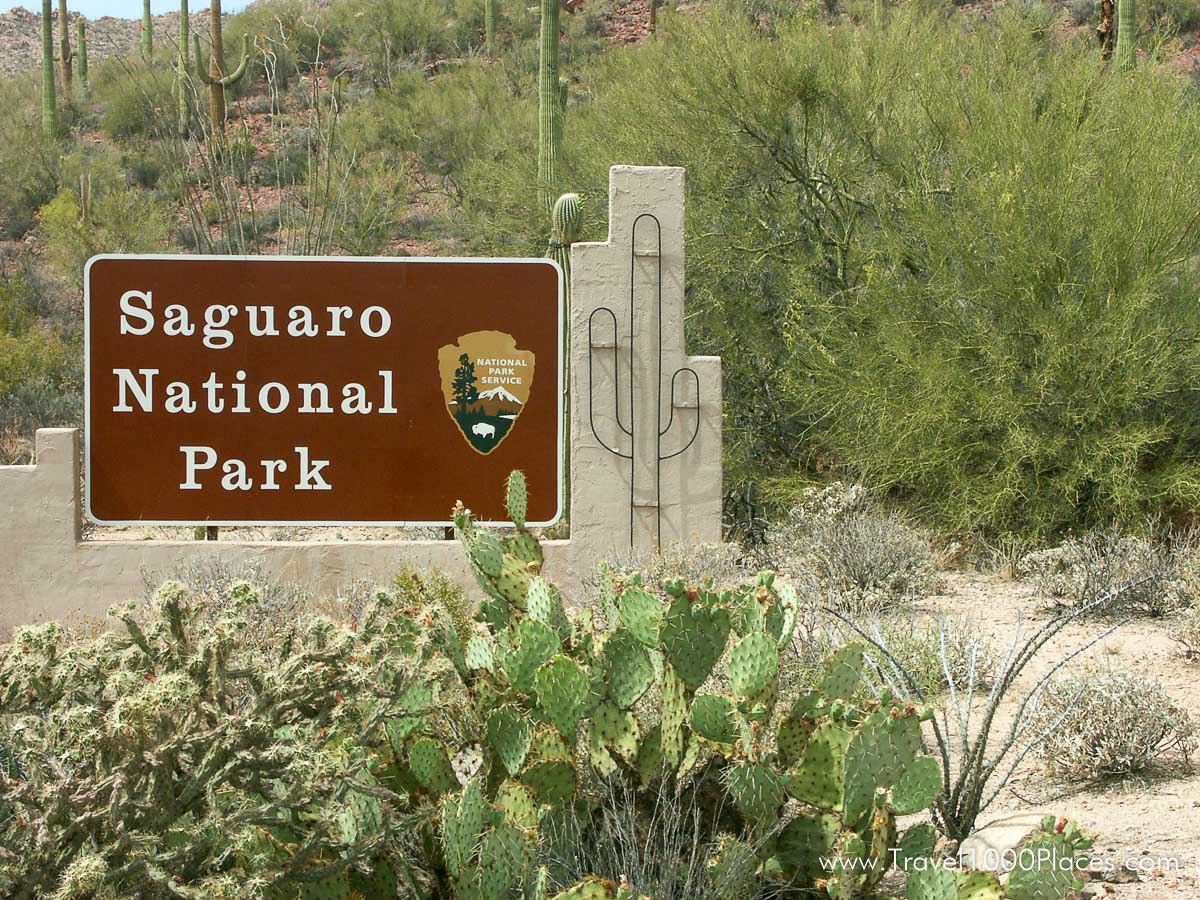
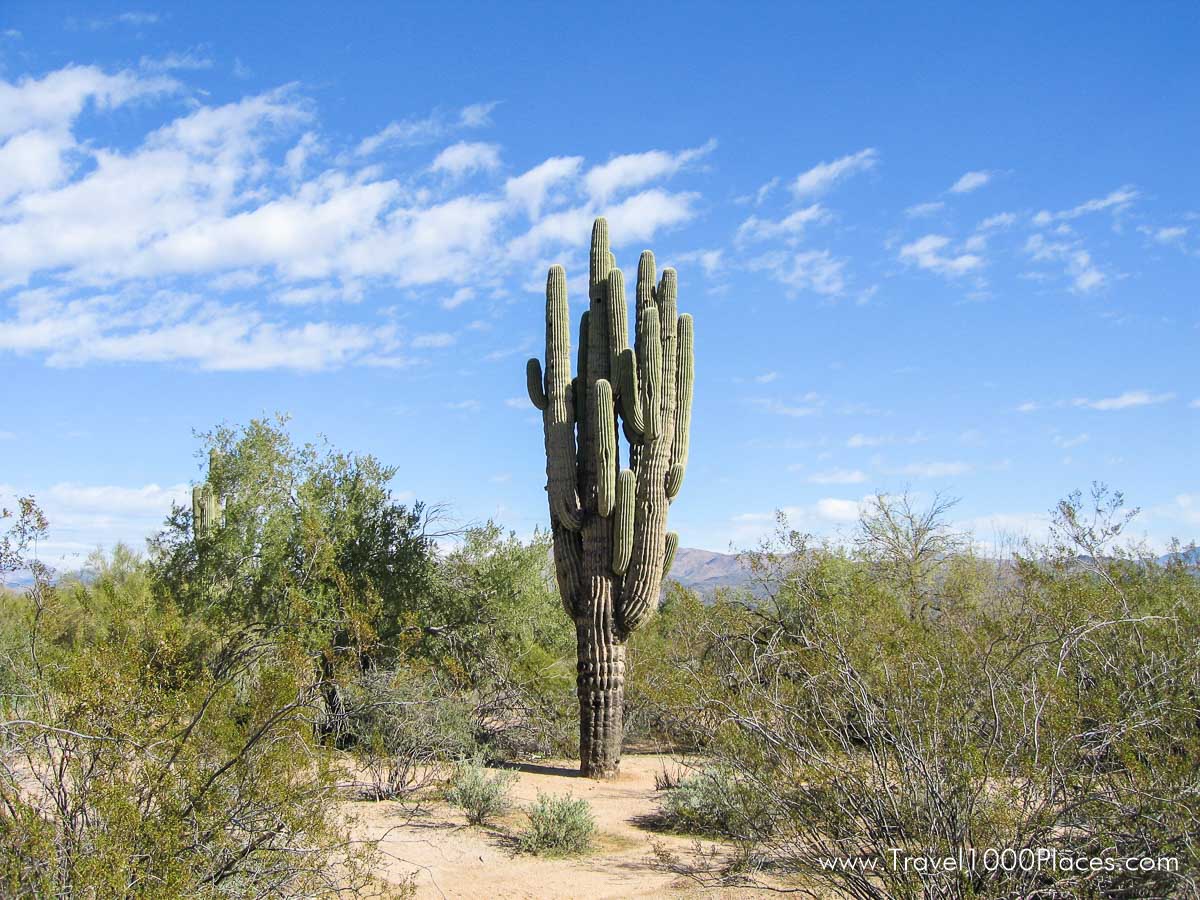
The Saguaro Cactus can reach a height of about 30 ft (10 m) and an age of approximately 200 years. The first ‘arms’ appear at age 65-70 ! Saguaro National Park is divided into two separate parks: Saguaro East (Tucson Mountain Park), is situated ca. 15 mi east of Tucson and Saguaro West is located ca. 15 mi northwest of Tucson.
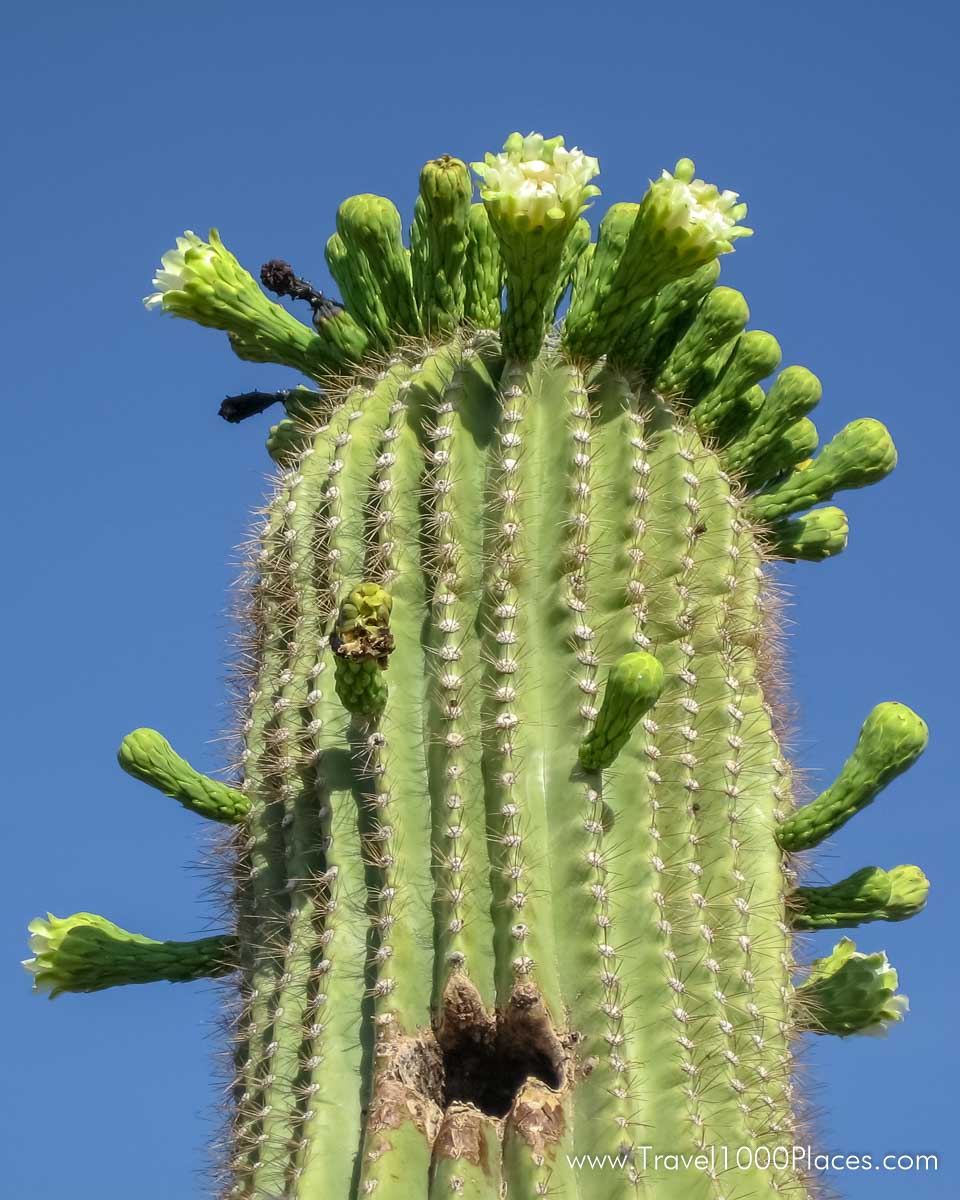
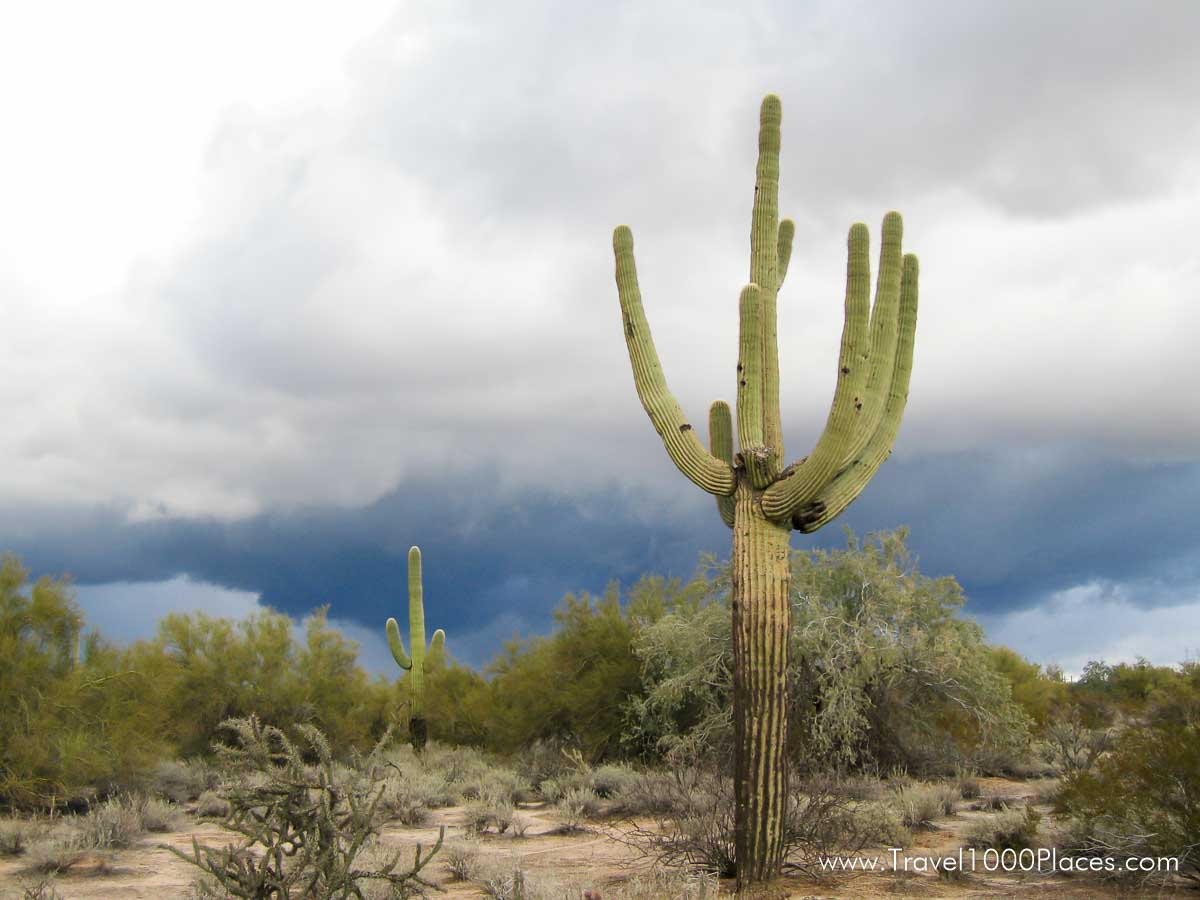
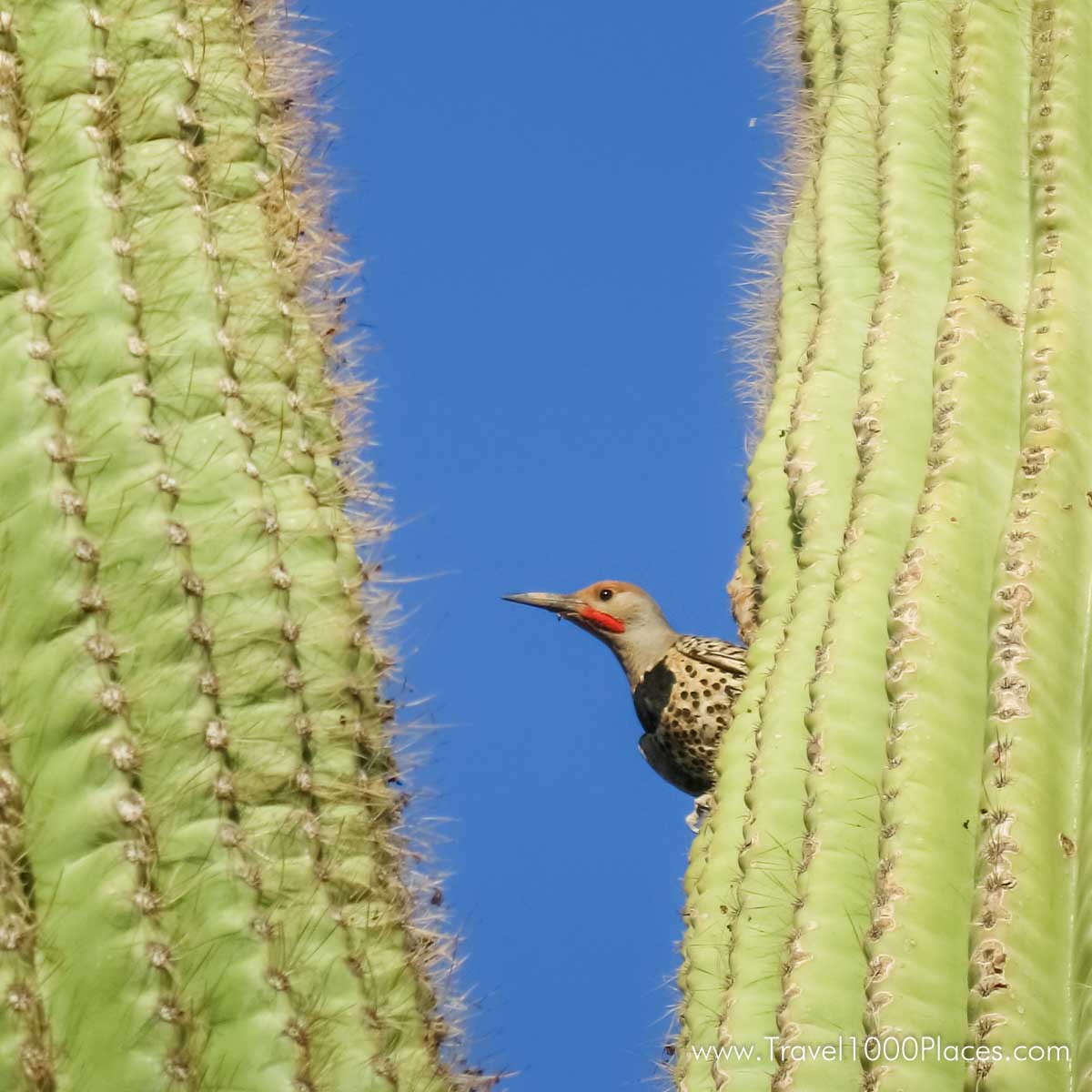
The Park in a nutshell
Start your park visit by stopping at the visitor center for maps, information, and suggestions. Most visitors enjoy the scenic drives, bird watching, photography, hiking, and participating in guided walks.
There several short self-guided trails or loops (10-30 min) with signs explaining the wildlife and nature.
Numerous guided walks are offered at each visitor center. Published schedules of programs are available during the winter season.
Both districts have miles of trails for hiking and scenic loop drives. For more information on these trails stop at the visitor center and inform yourself on the official park website.
Entrance fees
Purchase your entrance pass online, see information here: https://www.nps.gov/sagu/planyourvisit/fees.htm
Saguaro National Park Weekly Pass – $25.00/vehicle (U.S. Dollars)
Admits one single, private, non-commercial vehicle and all its passengers. Organized groups are not eligible for the vehicle permit.
Saguaro National Park Weekly Pass – $20.00/motorcycle (U.S. Dollars)
Admits one single motorcycle. Organized groups are not eligible for the motorcycle permit.
Saguaro National Park Individual Weekly Pass – $15.00/person (U.S. Dollars)
Admits one individual when entering by foot or bicycle. Individuals 15 years or younger are admitted free of charge.
Official Park Website
Official National Park Website: https://www.nps.gov/sagu/
Camping
All the details to be found on the official National Park website: https://www.nps.gov/sagu/planyourvisit/camping.htm
Location & Visitor Center
Saguaro National Park is divided into two separate parks:
Tucson Mountain District (west of Tucson)
The Tucson Mountain District of Saguaro National Park is located 15 miles (24 km) west of downtown Tucson, Arizona.
Rincon Mountain District Visitor Center (east of Tucson)
The Rincon Mountain District visitor center is located 15 miles (24 km) east of downtown Tucson, Arizona.
Most visitors to Saguaro National Park use private vehicles to get around. Public transportation is NOT available within the Park. All roads with Saguaro National Park are open to bicycle use.
Operating Hours & Seasons
Both districts of the Park are open daily from 7:00 am to sunset. Visitor centers are open daily from ca. 9:00 a.m. to 5:00 p.m. daily. Both Visitor Centers are closed on Christmas Day, New Year’s Day, and Thanksgiving.
Map
Lodging
No Lodging available within the Park. Check the Tucson area for accommodation.
Weather & Temperatures
Winters are very delightful with mild warm days averaging 65 degrees F. (19 degrees C.) and cool nights averaging 40 F.(5 C). Summers can be extremely hot with daytime temperatures exceeding 105 F.(41 C) in the shade, and evening lows averaging 72 F (22 C). It is recommended to always wear a hat and use sunscreen while hiking. Drink plenty of water. At least one gallon of water per person, per day is recommended.
The Saguaro Cactus

Saguaro cacti, Carnegiea gigantea, only grow in the Sonoran Desert. However, they do not grow in all parts of the Sonoran Desert. The range of the saguaro is limited by freezing temperatures in winter. Saguaros are also limited by elevation. They are generally found growing from sea level to approximately 4,000 feet in elevation. Saguaros growing higher than 4,000 feet are usually found on south facing slopes where freezing temperatures are less likely to occur or are shorter in duration.

Saguaros are a very slow growing cactus. In Saguaro National Park, studies indicate that a saguaro grows between 1 and 1.5 inches in the first eight years of its life. These tiny, young saguaros are very hard to find as they grow under the protection of a ‘nurse tree’, most often a palo verde, ironwood or mesquite tree. As the saguaro continues to grow, its much older nurse tree may die. Some scientists believe that competition from the saguaro may lead to the death of the nurse tree by taking water and nutrients from the soil in the immediate area. As a saguaro begins to age, growth rates vary depending on climate, precipitation and location. We do know that the period of greatest growth in a saguaro cactus is from unbranched to branched adult. At Saguaro National Park, branches normally begin to appear when a saguaro reaches 50 to 70 years of age. In areas of lower precipitation, it may take up to 100 years before arms appear. When a saguaro reaches 35 years of age it begins to produce flowers. Though normally found at the terminal end of the main trunk and arms, flowers may also occur down the sides of the plant. Though, additional arms allow the saguaro to produce extra flowers. Flowers will continue to be produced throughout a saguaro’s lifetime. An adult saguaro is generally considered to be about 125 years of age. It may weigh 6 tons or more and be as tall as 50 feet. The average life span of a saguaro is probably 150 – 175 years of age. However, biologists believe that some plants may live over 200 years.
From Flower buds to a cactus Saguaro buds begin to appear in mid-April around the top of the main trunk and arms.
The buds open into large white flowers from late April through early June. Each flower opens in the middle of the night, and closes the following day. Saguaro flowers are pollinated by nectar feeding bats, birds and insects.
After a saguaro flower has been pollinated, it begins its transformation into a fruit. Complete ripening takes approximately 30 to 40 days. Dried flowers often remain attached to the ripening fruit.
Near the end of the ripening period, the bright red fruits begin to split open. Inside are approximately 2000 tiny black seeds. Both the flesh and seeds are consumed by a variety of desert animals – when the fruit and seeds are eaten by a coyote or cactus wren, the seeds pass through their digestive unharmed and are distributed throughout the desert. However, if the seeds are eaten by a dove or quail, they will be completely consumed in the digestive system. It is estimated that a saguaro can produce some 40 million seeds during its lifetime. However, few will survive to become a seedling. Fewer still will become an adult. The low survival rate of seedlings is due to drought, prolonged freezing and animals eating them.
If a saguaro seed falls in the right place, and at the right time, it may germinate and begin its long life. Only a few of the seeds a saguaro produces in its lifetime will germinate and grow to maturity. For the best chance of survival, saguaro seedlings need the protective cover of a “nurse plant”. The shade and additional moisture under the nurse plant is crucial to the survival of young saguaros. In Saguaro National Park, saguaros begin to grow arms at about 65 to 75 years of age.

